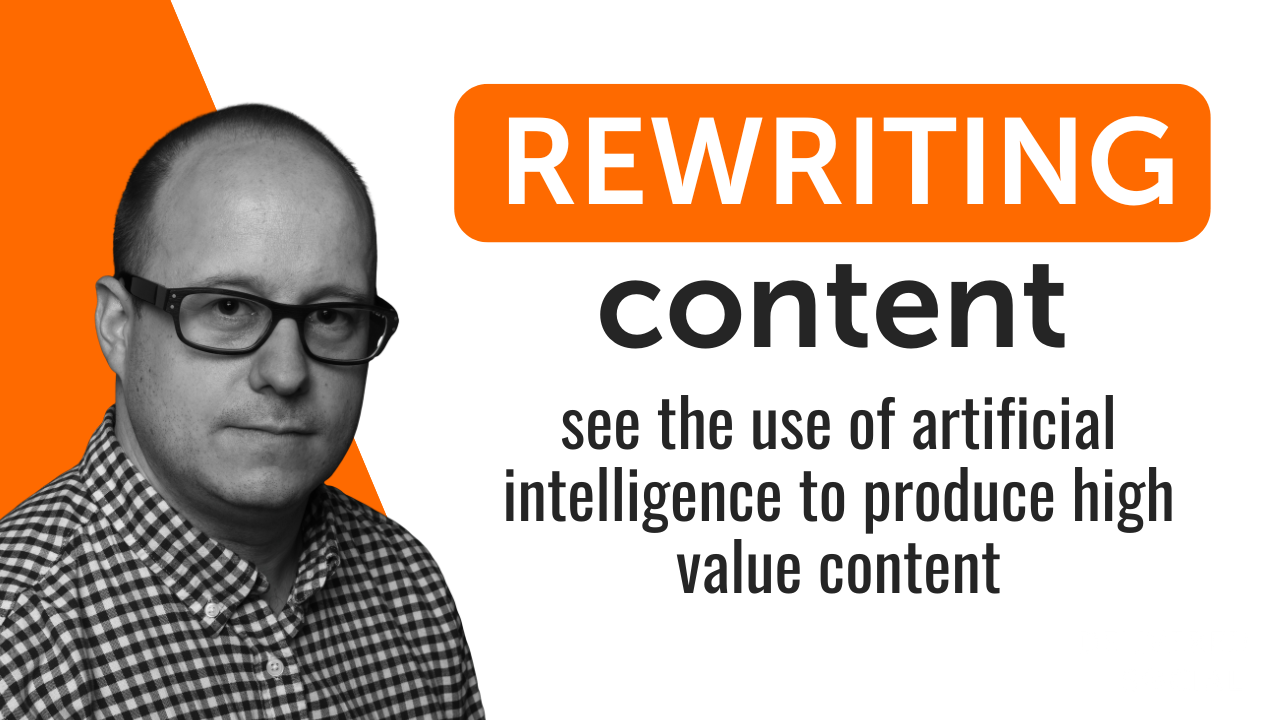
Search engine optimisation has now become a key part of content creation and marketing. As artificial intelligence (AI) is becoming more popular, a new tool has surfaced that will help you take content optimisation to the next level — AI text rewriting. This technology uses natural language processing to analyse text and rewrite it for improved readability, engagement, and search visibility.
As an AI text rewriter, like Smodin become more advanced, they have the potential to transform content creation workflows. For marketers and business owners, these tools promise to save time and resources while boosting content performance. When used properly, AI-powered rewriting can be the key to achieving a high-ranking, high-converting online presence.
The Evolution Of Content Creation And SEO
When the Internet was young, content creation and optimisation were an afterthought. The websites were thin websites with a few static pages and very little content that was oriented around the company rather than the needs of the visitor. The practice of SEO has not yet been structured.
The digital world became more competitive, but quality and optimising the content was the frontrunner. They started to realise that optimised, strategic content led to more organic traffic and conversions. This led to content production being a data-driven practice around SEO.
The Growth of Content Marketing
Over the past decade, content marketing has exploded in popularity. Why? Because it works. Website visitors increasingly look for information online before making a purchase decision.
Quality content builds trust and positions brands as industry thought leaders. For long-term success, businesses must provide a steady stream of valuable, engaging content tailored to their target audience.
The SEO Learning Curve
As content assumed a more prominent marketing role, SEO evolved into a complex discipline. Google's algorithm considers over 200 ranking factors. Mastering technical SEO areas like metadata, site architecture, speed optimisation, and link building is challenging.
Producing optimised content at scale strains resources. Skilled writers must either learn SEO fundamentals or work alongside SEO experts. This slows down content production and raises costs, especially for small businesses with limited budgets.
Rise Of The Machines: AI Comes To Content
Advances in artificial intelligence now allow software to analyse text and learn the principles of quality writing. The rapid evolution of AI content tools reflects the technology's potential to transform content production.
Automated Insights
Automated writing tools like Wordsmith from Automated Insights brought AI content creation into the mainstream. Launched in 2014, Wordsmith uses data to auto-generate written reports, product descriptions, and more. It demonstrated machine learning's ability to produce relevant, readable content tailored to human needs.
In 2022, Automated Insights unveiled the next stage in AI writing: an auto-generated article and blog post creator. Although current versions still need to be supervised by humans, this technology is a glimpse into the automated content market's future.
SEO-Focused AI Content Tools
Just as AI software has come a long way for the purpose of content at scale, it has also developed specifically for search-optimised content. These are not tools for fully automated drafting, rather, they are for improving human-created text.
For instance, AI tools like Smodin and Copy.ai rewrite draft text for better SEO with AI. They review and study things like readability, word count, keyword density and repetition to raise search exposure.
This refinement-focused approach allows AI to enhance content rather than fully replace human creators. According to 43% of marketers, AI-assisted writing tech has become an essential part of content operations. These tools make producing optimised, high-quality content at scale more efficient.
As this technology improves, AI-assisted rewriting will become an integral part of an SEO content strategy.
AI Text Rewriting In Action
So, how exactly does AI text rewriting work? These tools use complex machine learning algorithms to analyse text and transform it for specific goals, such as improving readability and SEO optimisation.
Natural Language Processing
AI content tools use natural language processing (NLP) to "read" text. NLP algorithms break down sentences grammatically to extract meaning. The software can identify parts of speech, analyse tone and emotion, and diagram complex syntax.
With this know-how, NLP algorithms would then be able to rewrite sentences or all of the passages to attempt to focus on certain reading levels, keyword density, and so forth.
However, NLP is extremely complex. Mastering language requires intuition, reasoning, and rules. That's why current AI writing still greatly benefits from human oversight. As the technology matures, however, NLP algorithms will become increasingly sophisticated.
SEO and Readability Metrics
When rewriting for SEO, AI text tools focus on factors like:
- Page speed. Sentence length variation, formatting, and size of visuals impact load times.
- Word count. Google expects in-depth content with at least 1,000 words.
- Keyword placement and frequency. Where and how often keywords appear affects rankings.
- Outbound links. References to authoritative sources boost credibility.
- Media integration. Images, video, and graphics break up text and boost engagement.
To improve readability, algorithms modify:
- Sentence and paragraph length. Variation makes the text more readable.
- Transition words and flow. Logical transitions ease comprehension.
- Plain language. Accessible word choice and explanations increase understanding.
AI helps balance both search optimisation and reader experience. This is key for high-performance content that simultaneously ranks well and converts visitors.
Iterative Improvement
In the rewriting process, AI doesn't just make assumptions about ideal modifications. Algorithms learn and improve edits through iteration and feedback.
For instance, Copy.ai has a feedback loop that learns from human ratings of the suggestions it provides. The tool brings up initial changes, and then refines edits as the user inputs, so the algorithm can learn to improve its rewriting skills over time.
Advanced AI content platforms also A/B test rewritten versions to see which perform better. With data backing this empirical approach, metrics are positively impacted by changes.
With time, these iterative processes make way for AI rewriting to become more fine tuned and compatible with content goals.
Challenges and Considerations For AI Content Rewriting
AI text rewriting technology has progressed rapidly, but adoption still comes with challenges and risks:
Potential Legal Risks
Since AI learning depends on ingesting vast datasets, questions about copyright and plagiarism arise. If the algorithm copies unique expressions or passages without modification, the resulting content could violate intellectual property protections.
Before implementing AI rewriting, creators should vet technologies on:
- Data sourcing. What texts were used to train the AI?
- Rewrite sampling. Does the algorithm make significant changes to avoid plagiarism?
- Efficacy testing. How well does it paraphrase copyrighted language?
Choosing technologies that are transparent about their data sourcing and sampling methodologies mitigates this risk.
Impact on Brand Voice and Tone
Capturing the essence of a distinct brand identity in writing is one of the most complex language tasks. As it turns out, AI algorithms aren't great at mimicking the subtleties of brand voice, a distinct way to speak to readers that creates an emotional connection with them.
This means that companies that rely too much on AI rewriting run the risk of losing their brand personality. Objective measures of readability, for example, can be optimised by AI tools, but the brand voice remains at the mercy of humans.
Information Accuracy
Since AI content rewriting depends so heavily on analysing text, the accuracy of algorithm-generated writing is only as good as its dataset. If the training data lacks factual reliability or contains biased information, those faults will surface in the output.
Currently, AI cannot fact-check or confirm data like a knowledgeable human writer. Companies should manually verify any facts or statistics used in AI-assisted content. However, as machine learning continues to progress, accuracy will improve.
Conclusion: The Future Of AI Content Technology
AI-powered content creation is still early in its developmental arc. While current tools focus on refining draft text, the next frontier is automated content outline and drafting.
With sufficient training data, AI algorithms can study how humans structure written works and attempt to replicate outlines. As artificial intelligence grows more advanced, software will continue expanding its role. Within the next several years, AI could draft original content end-to-end for simple applications like product descriptions. More complex works like long-form articles may still require human creativity, judgment and oversight.
In the near future, we'll see a hybrid approach in content creation, where people and AI work together to create content rather than replace people entirely. Algorithmic assistance within limits frees the human imagination of messy details. Strategy and creativity is handled by writers, and optimisation is taken care of by the software.
This human-AI symbiosis will lead to new content performance possibility. The scale, efficiency and ROI of content production will be driven by AI augmentation.
With AI-generated content becoming more common, it is essential to recognise the signs of automation. Learn how to identify and refine AI-generated text, images, and videos in our guide on spotting AI-generated content.
Interested In Working Together?
Introducing Delivered Social. We're The Most-Rated Digital Agency In Surrey & Hampshire – We've Got To Be Doing Something Right.
Delivered Social is a digital marketing agency with one mission—to help businesses grow. We're famous in Guildford and Portsmouth for our social clinics. We believe in free advice. We build lasting relationships because our team prides itself on being helpful, which our clients appreciate.
If you are looking for a new website or an agency to manage your social media presence, we can help.
If you need something slightly different, here's a super handy list of all our services, or you can always email us.























